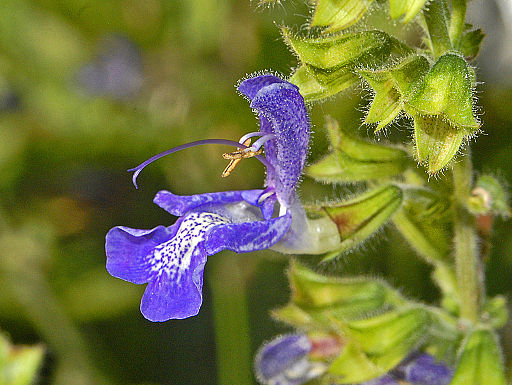Classification System: APG IV
Superregnum: Eukaryota
Regnum: Plantae
Cladus: Angiosperms
Cladus: Eudicots
Cladus: Core eudicots
Cladus: Asterids
Cladus: Lamiids
Ordo: Lamiales
Familia: Lamiaceae
Subfamilia: Nepetoideae
Tribus: Mentheae
Subtribus: Salviinae
Genus: Salvia
Species: Salvia transsilvanica
Name
Salvia transsilvanica Schur
References
Verh. Mitth. Siebenbürg. Vereins Naturwiss. Hermannstadt 4:57. 1853
Vernacular names
English: Transylvanian sage
Salvia transsylvanica is a herbaceous perennial native to a wide area from north and central Russia to Romania. It was described and named in 1853 by botanist Philipp Johann Ferdinand Schur, with the specific epithet referring to the Transylvanian Alps located in central Romania. It was introduced into horticulture in the 1980s.[1]
Salvia transsylvanica puts out several lax 2 feet (0.61 m) stems from a basal clump of leaves. The leaves that grow on the stem vary in size—being larger at the bottom—with the upper side being dark yellow-green and the underside pale with yellow veins. The leaves are very scalloped around the edges. The flowers are slightly longer than 0.5 inches (1.3 cm), and have a rich violet color, growing in loose whorls that are about .5 inches (1.3 cm) apart. Many flowers bloom at once, giving the plant a very colorful and striking appearance.[1]
Notes
Clebsch, Betsy; Barner, Carol D. (2003). The New Book of Salvias. Timber Press. p. 290. ISBN 978-0-88192-560-9.
Retrieved from "http://en.wikipedia.org/"
All text is available under the terms of the GNU Free Documentation License


